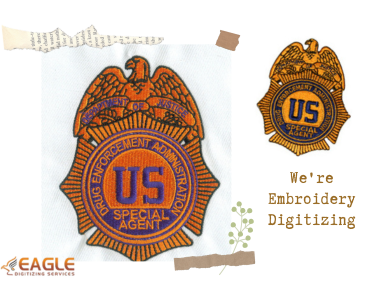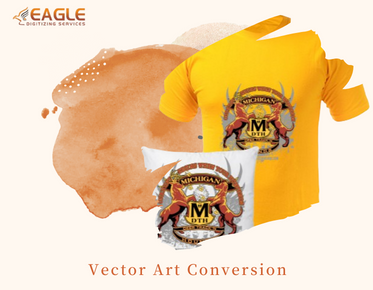Craft Battle: How Does the Quality of Embossing Compare to Digitized Embroidery
In the vibrant realm of textile artistry, two standout techniques have captured the imagination of creators and consumers alike: embossing and digitized embroidery. Each method has its distinct charm and utility, yet they diverge in execution, appearance, and purpose. As custom textiles gain traction in the fashion and decor sectors, the quest for quality becomes paramount. This article delves into these two techniques, comparing their qualities to help artisans, designers, and hobbyists make informed choices in their creative endeavors. If this post spurred your interest and you want to find out more about embroidery digitizing, please feel free to contact us.
The Growing Popularity of Custom Textiles: Why Quality Matters
The custom textile industry is experiencing a renaissance. As consumers increasingly seek unique, personalized items, quality becomes a critical consideration. Whether it’s a custom-embossed leather wallet or a meticulously embroidered jacket, the craftsmanship behind these pieces can significantly impact their appeal. This demand for high-quality textiles encourages artisans to explore various techniques, prompting a closer examination of embossing and digitized embroidery.
Understanding Embossing
What Is Embossing? Techniques and Processes Explained
Embossing involves creating a three-dimensional design on a surface by compressing it with a die. The process can yield various effects, such as raised patterns (embossing), indented designs (debossing), or even incorporating foil for a shimmering finish. The beauty of embossing lies in its ability to transform flat materials into captivating works of art, adding a layer of sophistication and elegance to everything from invitations to handbags.
The Materials Used in Embossing: Paper, Leather, and Fabrics
Embossing can be applied to a diverse array of materials. Paper embossing is prevalent in the realms of stationery and packaging, enhancing visual appeal and tactile interaction. Leather, with its natural durability, becomes an excellent canvas for embossing, producing striking textures that elevate accessories and garments. Fabrics, particularly those with heavier weights, can also be embossed, creating stunning designs that stand out while retaining the material's softness.
Types of Embossing: Blind, Foil, and Debossing
Embossing techniques vary, each with its unique aesthetic. Blind embossing creates a subtle, tone-on-tone effect without additional color, ideal for sophisticated designs. Foil embossing, on the other hand, incorporates metallic foils, adding a luxurious shine and vibrancy that catches the eye. Debossing reverses the process, creating a sunken design that can convey a sense of understated elegance. Each technique brings its character, enriching the overall design narrative.
Comparing Quality: Embossing vs. Digitized Embroidery
Visual Appeal: Comparing Texture and Depth
When it comes to visual appeal, embossing, and digitized embroidery each has their distinct charm. Embossing offers a tactile quality that is instantly engaging, with raised designs that catch the light and invite touch. Conversely, digitized embroidery presents intricate stitch work, showcasing colors and patterns that can be both bold and delicate. While embroidery can mimic the appearance of embossed designs through layering, the two techniques convey different sensations and aesthetic experiences.
Longevity and Durability: How Each Technique Stands the Test of Time
Longevity is a crucial factor when considering the quality of any textile technique. Embossed items, when crafted correctly, exhibit remarkable durability, especially on sturdy materials like leather. The raised designs resist wear and tear, maintaining their visual impact over time. Digitized embroidery, while also durable, can be susceptible to fraying or fading, particularly if exposed to harsh conditions or improper care. Thus, while both methods can stand the test of time, embossed pieces often carry a slight edge in resilience.
Cost Considerations: Which Method Offers More Value?
When weighing cost considerations, both techniques present unique financial implications. Embossing typically requires an initial investment in die creation, which can be costly but proves beneficial for large production runs. Conversely, digitized embroidery may have lower setup costs, but the expense can escalate with complex designs requiring multiple thread colors or specialized stitching techniques. Ultimately, the choice may hinge on the scale of production and the specific requirements of the project.
Aesthetic Differences: Style and Impact
The Look and Feel: Comparing Textured Surfaces and Stitching
The aesthetic impact of embossing and digitized embroidery diverges significantly. Embossing offers a smooth yet textured surface that can feel luxurious to the touch, inviting interaction. In contrast, digitized embroidery creates a layered effect that adds dimension through stitching, giving designs a rich visual complexity. Depending on the intended outcome, one may be more suitable than the other, highlighting the importance of the project's context.
Color Saturation: How Each Technique Handles Hues and Shades
Color saturation varies between the two techniques, influencing their overall impact. Embossed designs, particularly in blind or debossed styles, often rely on the interplay of light and shadow rather than vibrant color. This can create a subtle elegance, ideal for sophisticated applications. On the other hand, digitized embroidery allows for a wide spectrum of colors, enabling intricate patterns and gradients that can enhance visual storytelling. The choice between the two will depend on the desired effect and emotional resonance.
Design Complexity: What Works Best for Intricate Patterns?
For intricate designs, digitized embroidery often reigns supreme. Its ability to replicate fine details and create elaborate patterns through stitching makes it a go-to choice for complex artwork. However, embossing can also accommodate detailed designs, albeit with certain limitations regarding intricacy and fine lines. For artists looking to achieve elaborate visual narratives, understanding the strengths of each method is essential in selecting the most appropriate technique.
Functional Differences: Usability and Application
Best Use Cases: When to Choose Embossing vs. Digitized Embroidery
The choice between embossing and digitized embroidery often boils down to specific use cases. Embossing is ideal for creating high-end, tactile items like leather goods, stationery, or packaging, where a sophisticated look and feel are paramount. Digitized embroidery, however, excels in the apparel sector, offering vibrant designs that can withstand regular wear and tear. Understanding the end-use of the product can guide creators in making the best choice for their projects.
Clothing, Accessories, and Home Decor: Exploring Practical Applications
Both techniques find their niches across various applications. Embossing is commonly utilized in accessories such as wallets, belts, and home decor items like pillows or wall art, where texture and depth are essential. Digitized embroidery dominates the clothing sector, featuring everything from t-shirts to hats, with its ability to add personalization and intricate details. Both methods enhance the aesthetic and functional qualities of the final product, enriching the user experience.
User Experience: How Each Method Affects Wearability and Functionality
User experience is a critical consideration in design. Embossed items tend to be more robust and often possess a luxury feel, making them appealing to high-end markets. However, their rigidity may affect wearability, particularly in clothing. Digitized embroidery, while offering beautiful aesthetics, can sometimes lead to stiffness if not executed properly. Evaluating how each method impacts the end user's experience can inform better design decisions.
Maintenance and Care: Keeping Your Work Looking Great
Caring for Embossed Items: Cleaning and Preservation Tips
Embossed items require specific care to maintain their integrity and appearance. For paper or fabric embossed goods, gentle cleaning with a soft cloth is advisable to avoid damaging the raised areas. Leather items can benefit from occasional conditioning to keep the material supple and prevent cracking. Proper storage away from direct sunlight can also preserve the richness of embossed designs over time.
Maintaining Digitized Embroidery: Wash and Wear Guidelines
Caring for digitized embroidery is essential to ensure longevity. Machine-washable items should be turned inside out to protect the stitches, using a gentle cycle with mild detergent. Air drying is preferable to avoid heat damage from dryers, which can cause fading and fraying. Following these guidelines will help maintain the vibrancy and integrity of embroidered designs, ensuring they continue to delight.
How to Avoid Common Pitfalls in Care for Both Techniques
Awareness of common care pitfalls is vital for preserving the quality of both embossed and embroidered items. Avoid using harsh chemicals or abrasive cleaning methods, as these can damage delicate textures or stitches. Regularly inspect items for signs of wear, and address any issues promptly to prevent further deterioration. With mindful care, both techniques can maintain their beauty and functionality over time.
Emerging Trends: The Future of Embossing and Digitized Embroidery
Innovations in Technology: How New Tools Are Changing the Game
Technological advancements are revolutionizing both embossing and digitized embroidery. New tools and machinery have emerged, enabling creators to push boundaries and explore innovative techniques. For instance, advancements in laser technology have made it possible to achieve intricate embossed designs with unparalleled precision. Similarly, digitized embroidery machines are becoming more sophisticated, allowing for greater creativity and efficiency in production.
Sustainable Practices: Eco-Friendly Approaches in Both Fields
As sustainability becomes a priority in the textile industry, both embossing and digitized embroidery are evolving. Eco-friendly materials, such as recycled paper and organic fabrics, are gaining popularity among artisans. Additionally, water-based inks and low-impact dyes are becoming more prevalent in both techniques, minimizing environmental impact. Embracing sustainability not only enhances brand value but also appeals to conscious consumers
Hybrid Techniques: Combining Embossing and Embroidery for Unique Results
Innovative designers are increasingly exploring hybrid techniques that marry embossing and digitized embroidery. By combining these methods, artists can create captivating textures and depth while maintaining the intricate detail of embroidery. This fusion opens up exciting possibilities for unique products, allowing for the creation of one-of-a-kind pieces that stand out in a crowded marketplace. For the top-notch embroidery digitizing companies services, don't hesitate to get in touch with us.
Embrace the journey of exploration and experimentation. Whether you lean toward the tactile allure of embossing or the vibrant intricacies of digitized embroidery, there’s no right or wrong path. Finding your unique style will enrich your creative process, leading to innovative designs that reflect your artistic vision.
.png)


